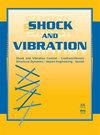Investigations of Dynamic Mechanical Performance of Rubber Concrete under Freeze-Thaw Cycle Damage
IF 1.2
4区 工程技术
Q3 ACOUSTICS
引用次数: 0
Abstract
In order to study the effect of the freeze-thaw cycle on the integrity and dynamic mechanical performance of rubber concrete, the wave speed of rubber concrete specimens with 10% rubber volume was measured by a nonmetallic ultrasonic detector. The impact tests were also performed on rubber concrete specimens with different numbers of freeze-thaw cycles (0, 25, 50, 75, 100, and 125) at different impact air pressures (0.3, 0.4, 0.5, and 0.6 MPa) using a 74 mm diameter split Hopkinson pressure bar (SHPB) device, peak stress, ultimate strain dynamic intensity enhancement factor (DIF), and energy absorption effect. The results show that with the increase of freeze-thaw cycles, the wave speed decreases, and the freeze-thaw action will damage the rubber concrete and reduce the longitudinal wave velocity. Under the same freeze-thaw cycles, with the rise of strain rate, the peak stress, limit strain, DIF, and absorbed energy increase, and there is an obvious strain rate effect; under the pressure of 0.6 MPa, the peak stress of 25, 50, 75, 100, and 125 freeze-thaw cycles decreases by 25.1%, 37.1%, 46%, 52.5%, and 54.8%. With the increase of the freeze-thaw cycles, the peak stress of the specimen decreases, and the decrease gradually decreases. After the number of cycles exceeds 100, the stress decrease of the specimen is no longer obvious, the limit strain increases, and the absorbed energy decreases. The freeze-thaw environment significantly reduces the strength and integrity of rubber concrete specimens.冻融循环损伤下橡胶混凝土动态力学性能研究
为了研究冻融循环对橡胶混凝土完整性和动态力学性能的影响,采用非金属超声探测仪测量了橡胶体积为10%的橡胶混凝土试件的波速。采用直径74 mm的劈裂式霍普金森压杆(SHPB)装置、峰值应力、极限应变动强度增强因子(DIF)和能量吸收效应,对不同冻融循环次数(0、25、50、75、100和125)的橡胶混凝土试件在不同冲击气压(0.3、0.4、0.5和0.6 MPa)下进行冲击试验。结果表明:随着冻融循环次数的增加,波浪速度减小,冻融作用会破坏橡胶混凝土,使纵波速度降低;在相同冻融循环次数下,随着应变速率的升高,峰值应力、极限应变、DIF和吸收能量均增大,且存在明显的应变速率效应;在0.6 MPa压力下,25、50、75、100和125次冻融循环的峰值应力分别降低了25.1%、37.1%、46%、52.5%和54.8%。随着冻融循环次数的增加,试件的峰值应力减小,且减小幅度逐渐减小。循环次数超过100次后,试样的应力下降不再明显,极限应变增大,吸收能减小。冻融环境显著降低了橡胶混凝土试件的强度和完整性。
本文章由计算机程序翻译,如有差异,请以英文原文为准。
求助全文
约1分钟内获得全文
求助全文
来源期刊

Shock and Vibration
物理-工程:机械
CiteScore
3.40
自引率
6.20%
发文量
384
审稿时长
3 months
期刊介绍:
Shock and Vibration publishes papers on all aspects of shock and vibration, especially in relation to civil, mechanical and aerospace engineering applications, as well as transport, materials and geoscience. Papers may be theoretical or experimental, and either fundamental or highly applied.
 求助内容:
求助内容: 应助结果提醒方式:
应助结果提醒方式:


